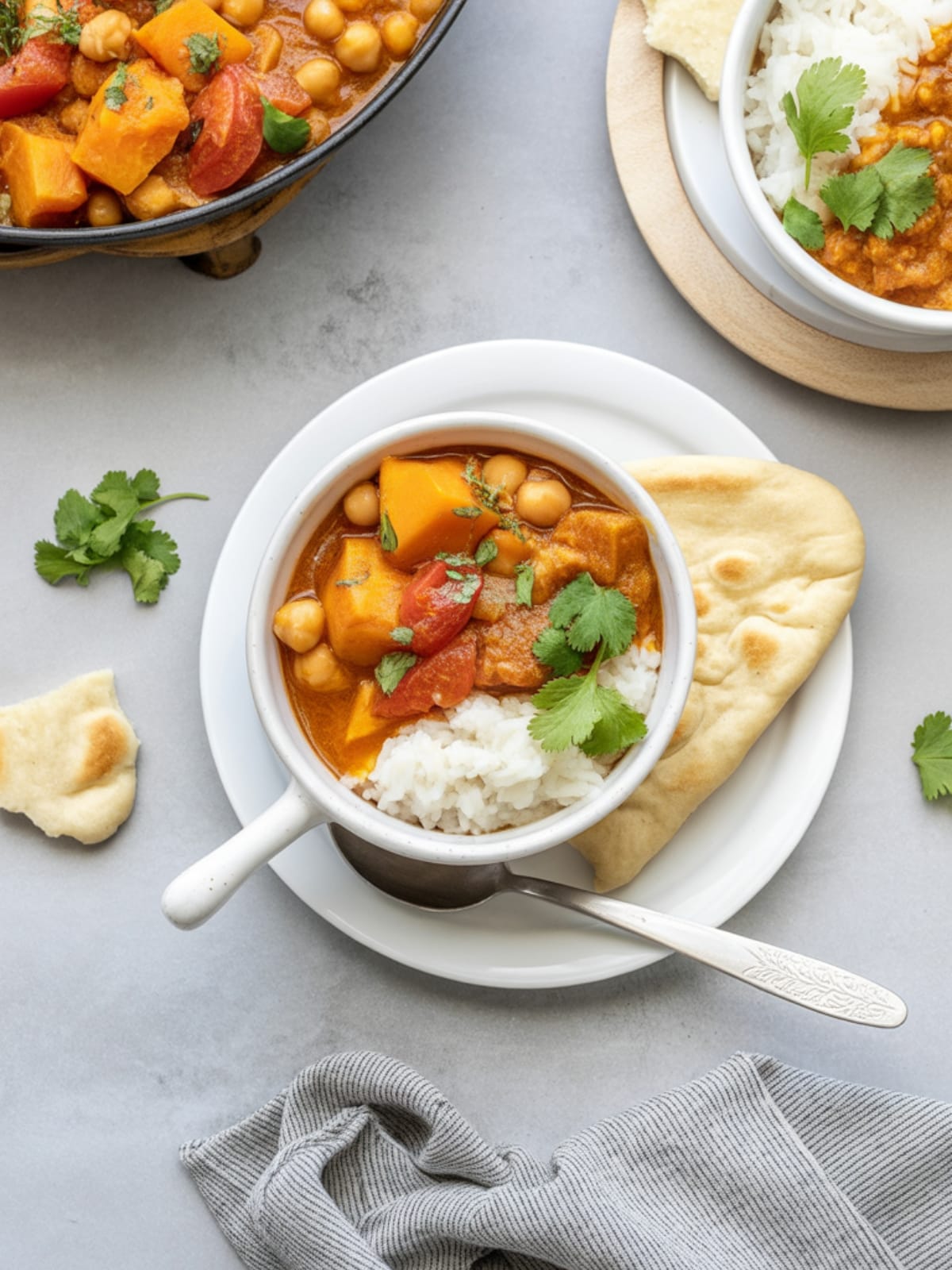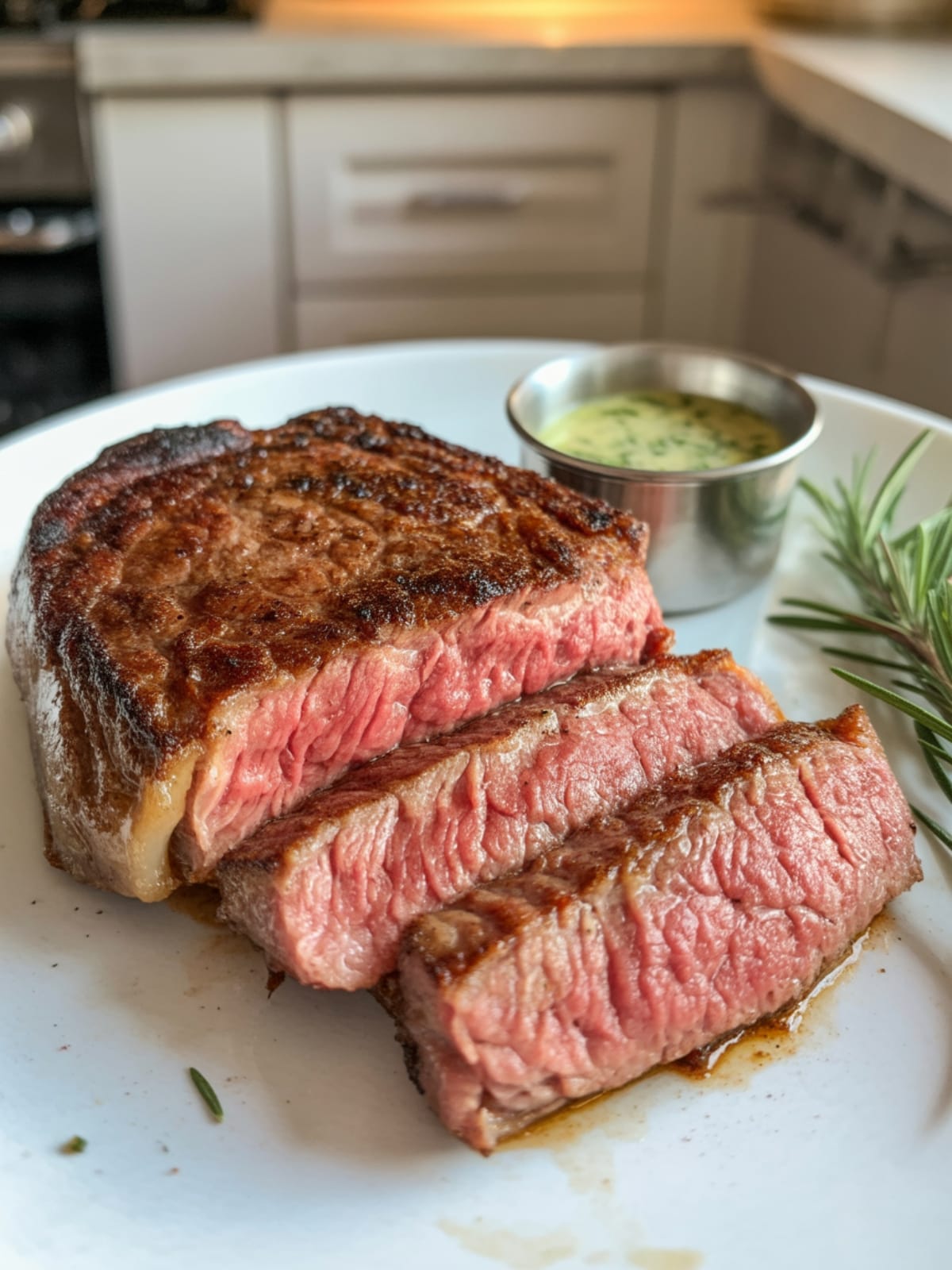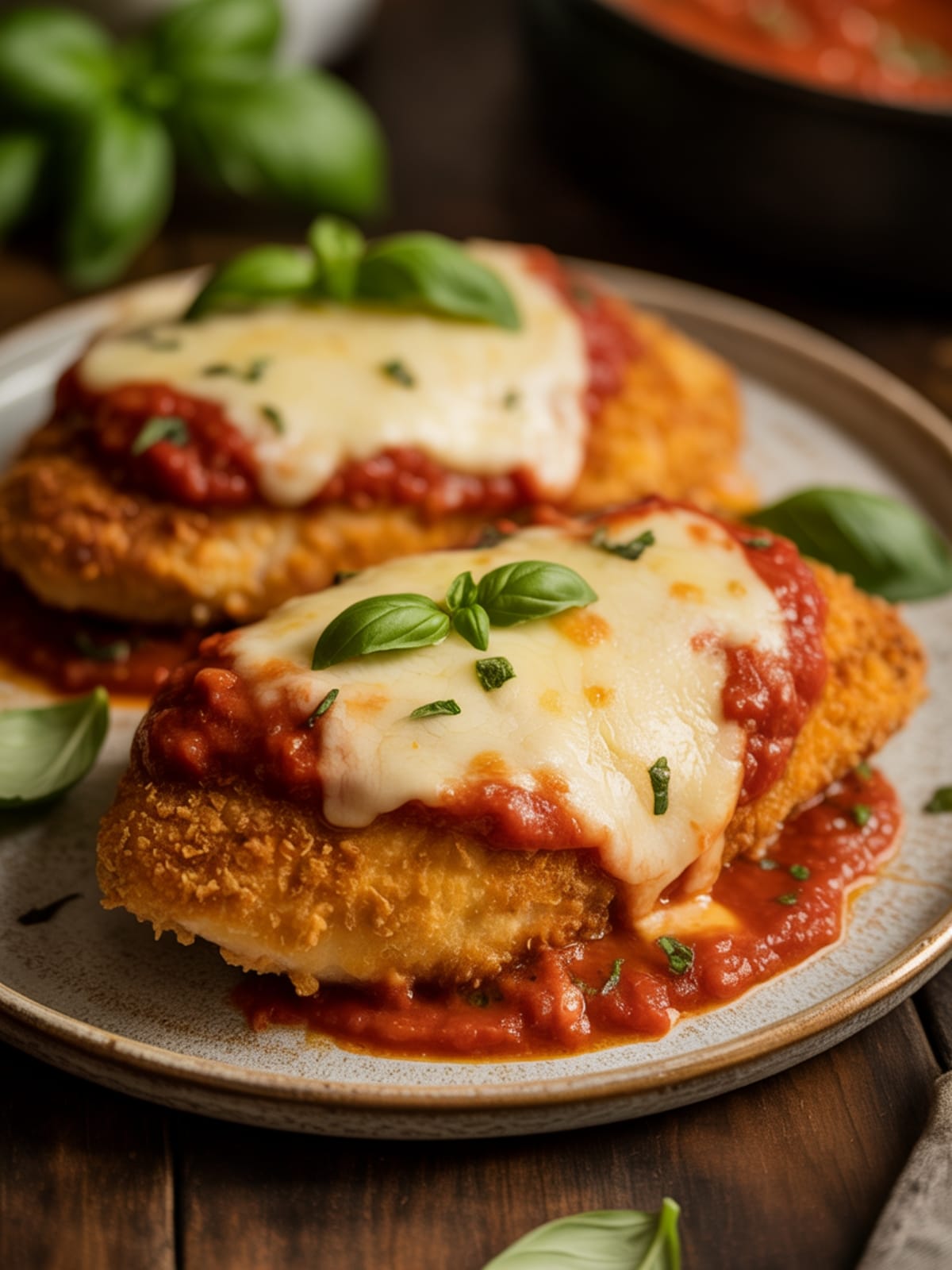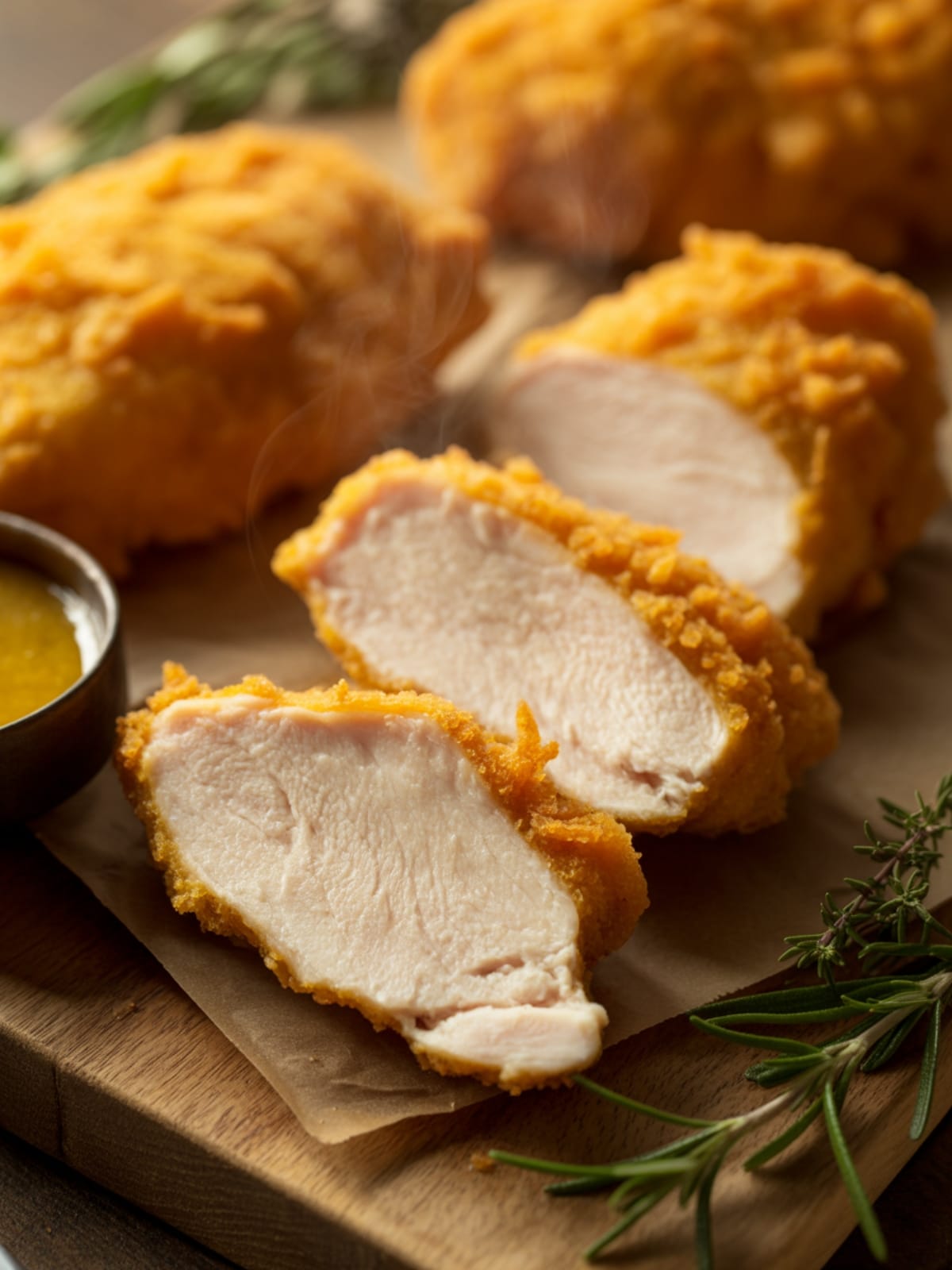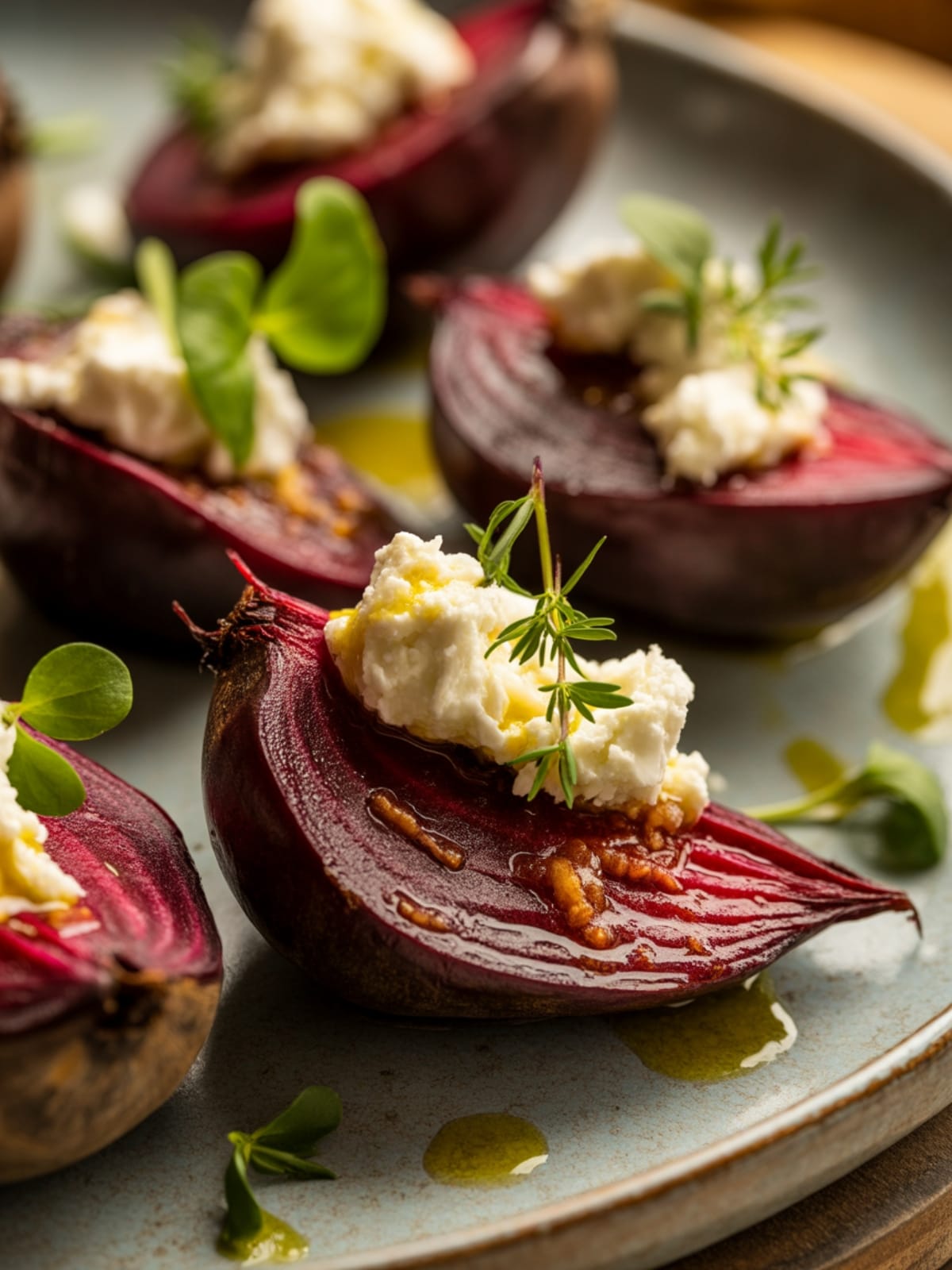Have you ever craved a dish that wraps you in warmth like a cozy blanket? That’s exactly what this Moroccan Pumpkin & Chickpea Stew delivers. I discovered this recipe during a particularly cold autumn, and it transformed my entire perspective on vegetarian comfort food.
This isn’t just another stew—it’s an adventure in a bowl that brings the vibrant spice markets of Marrakech right to your dinner table. The gentle sweetness of pumpkin mingles with aromatic spices and hearty chickpeas to create something truly magical. Even better?
It’s deceptively simple to make, despite its complex flavor profile.
Why This Recipe is Awesome
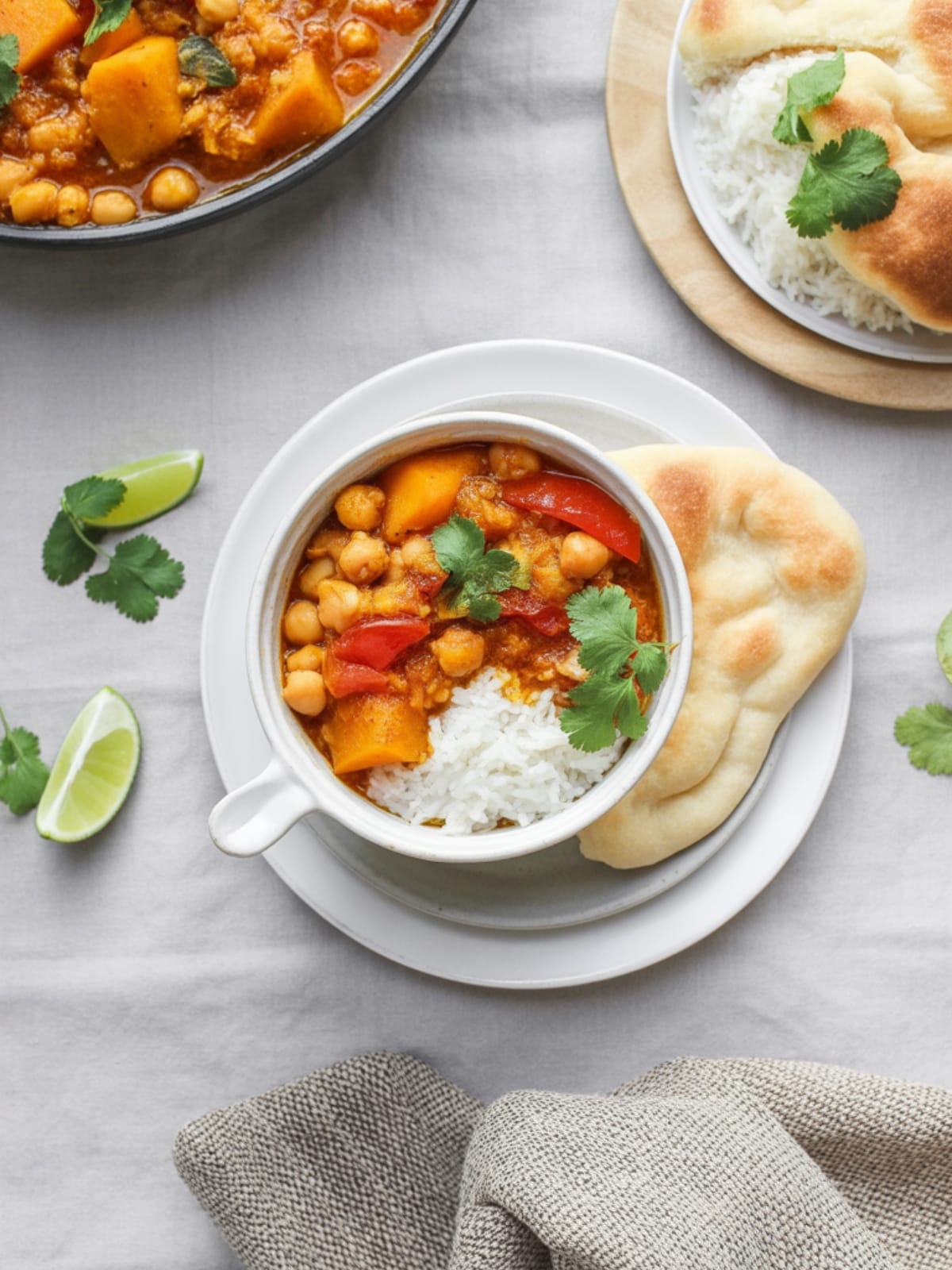
What makes this Moroccan Pumpkin & Chickpea Stew truly special is its perfect balance of accessibility and exotic flavor. You don’t need to be a culinary expert to create authentic North African flavors—the spice combination does the heavy lifting for you! The marriage of sweet pumpkin with earthy chickpeas creates a protein-rich meal that satisfies even the most devoted meat-eaters.
I’ve served this to countless skeptical friends who ended up requesting the recipe before dinner was even over. Unlike many stews that require hours of simmering, this one develops remarkable depth in just about 30 minutes of cooking time. It’s also incredibly versatile—equally perfect for casual weeknight dinners or as an impressive centerpiece for gatherings.
The recipe forgives substitutions beautifully, making it adaptable to whatever you have on hand.
Equipment needed: Large pot or Dutch oven, sharp knife, cutting board, wooden spoon, measuring spoons, can opener
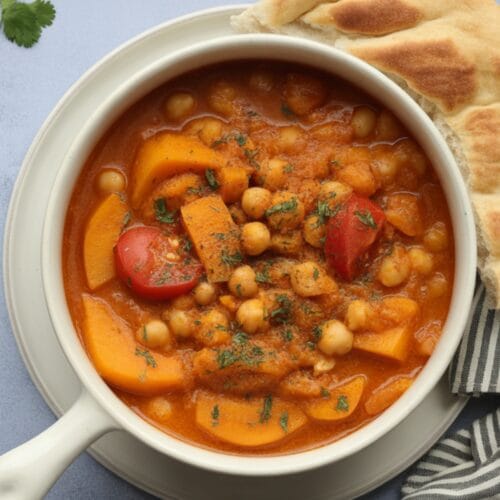
Moroccan Pumpkin & Chickpea Stew
Ingredients
- 2 tablespoons olive oil
- 1 large onion diced
- 3 garlic cloves minced
- 1 tablespoon fresh ginger grated
- 2 teaspoons ground cumin
- 1 teaspoon ground coriander
- 1 teaspoon ground cinnamon
- ½ teaspoon turmeric
- ¼ teaspoon cayenne pepper adjust to taste
- 1 small pumpkin about 2 pounds, peeled and cut into 1-inch cubes (butternut squash works great too)
- 2 cans 15 oz each chickpeas, drained and rinsed
- 1 can 14 oz diced tomatoes
- 4 cups vegetable broth
- 1 tablespoon harissa paste start with less if sensitive to heat
- 1 tablespoon honey or maple syrup
- 2 cups fresh spinach roughly chopped
- ¼ cup fresh cilantro chopped (plus extra for garnish)
- Juice of 1 lemon
- Salt and pepper to taste
- ¼ cup toasted pumpkin seeds for garnish optional
- Plain yogurt for serving optional
Instructions
- Heat olive oil in a large pot over medium heat until shimmering. Add diced onion and cook for about 5 minutes until translucent and slightly golden around the edges.
- Add minced garlic and grated ginger to the pot and sauté for 1 minute until fragrant, being careful not to let the garlic brown or burn.
- Stir in all the dry spices (cumin, coriander, cinnamon, turmeric, and cayenne) and cook for 30 seconds to bloom the flavors. You’ll know they’re ready when your kitchen fills with an amazing aroma.
- Add the pumpkin cubes and stir to coat them evenly with the spice mixture. Cook for about 3-4 minutes, allowing the edges to slightly caramelize.
- Pour in the diced tomatoes with their juice, followed by the vegetable broth. Stir in the drained chickpeas and harissa paste, then bring the mixture to a gentle boil.
- Reduce heat to a simmer, cover partially with a lid, and cook for 20-25 minutes or until the pumpkin is fork-tender but not falling apart.
- Stir in the honey or maple syrup to balance the acidity and spices. Taste and adjust seasonings as needed.
- Add the chopped spinach and half the cilantro, stirring until the spinach wilts, about 1-2 minutes.
- Finish with a squeeze of fresh lemon juice and remove from heat. The brightness of the lemon will elevate all the flavors in the stew.
- Let the stew rest for 5 minutes before serving to allow the flavors to meld. Serve in bowls topped with remaining cilantro, a dollop of yogurt if using, and a sprinkle of toasted pumpkin seeds.
Notes
- For meal prep, this stew tastes even better the next day as the flavors continue to develop overnight.
- To save time, you can use pre-cut butternut squash instead of pumpkin.
- The stew freezes beautifully for up to 3 months. Just omit the spinach and add it fresh when reheating.
- For a thicker consistency, mash some of the pumpkin and chickpeas against the side of the pot with your spoon.
- Ras el hanout can be substituted for the individual spices if you have it on hand (use about 1 tablespoon).
- If using dried chickpeas instead of canned, soak them overnight and cook them separately before adding to the stew.
Calories & Nutritional Info
- Calories: Approximately 285 calories per serving
- Protein: 10g per serving
- Fiber: 12g per serving
- Carbohydrates: 42g per serving
- Fat: 9g per serving (mostly healthy unsaturated fats)
- Dietary notes: Vegan (if using maple syrup instead of honey), gluten-free, dairy-free (without yogurt garnish)
- Allergen information: Free from common allergens like nuts, dairy (without yogurt), eggs, and wheat
Common Mistakes to Avoid
- Not blooming the spices. Sautéing the dry spices in oil awakens their essential oils and creates deeper flavor—skipping this step results in a less complex stew.
- Overcooking the pumpkin. Keep an eye on your timing—mushy pumpkin will dissolve and you’ll miss that wonderful textural contrast with the chickpeas.
- Adding spinach too early. It needs just a minute or two to wilt; any longer and it loses its vibrant color and nutritional value.
- Forgetting the acid component. The lemon juice isn’t just a garnish—it’s essential for balancing the earthy spices and sweet pumpkin.
- Using watery pumpkin varieties. Pie pumpkins, sugar pumpkins, or butternut squash work best; avoid carving pumpkins which have less flavor and more moisture.
Alternatives & Substitutions
- For the pumpkin: Butternut squash, sweet potatoes, or kabocha squash all work beautifully.
- For the chickpeas: White beans, lentils, or even cooked quinoa can substitute, though the texture will differ.
- For harissa: If unavailable, use a combination of tomato paste (1 tablespoon) plus ¼ teaspoon each of cayenne pepper and smoked paprika.
- For vegetable broth: Chicken broth works for non-vegetarians, or simply use water with an extra pinch of salt.
- For spinach: Kale, chard, or collard greens are excellent alternatives—just cook them a few minutes longer.
- For a protein boost: Add diced tofu or cooked chicken about 5 minutes before the stew is finished.
- To make it creamy: Stir in a few tablespoons of coconut milk or cashew cream before serving.
FAQs
Can I make this stew in a slow cooker?
Absolutely! Sauté the onions, garlic, ginger, and spices first, then transfer everything except the spinach, cilantro, and lemon juice to your slow cooker. Cook on low for 6-7 hours or high for 3-4 hours. Add the spinach, cilantro, and lemon juice in the last 10 minutes.
How do I store and reheat leftovers?
Store in an airtight container in the refrigerator for up to 4 days. Reheat gently on the stovetop over medium-low heat, adding a splash of broth if it’s thickened too much. The flavors actually improve after a day or two!
Is this recipe spicy?
It has a moderate warmth from the harissa and cayenne, but you can easily adjust the heat level. For a milder stew, reduce or omit the cayenne and use less harissa. For more heat, add a diced jalapeño with the onions or increase the cayenne.
What can I serve with this stew?
Couscous is traditional and perfect for soaking up the flavorful broth. Other excellent options include quinoa, brown rice, or crusty bread. A simple side salad with a lemon vinaigrette complements the meal beautifully.
Can I use canned pumpkin puree instead of fresh pumpkin?
This recipe works best with fresh pumpkin chunks for texture. Canned pumpkin puree would dramatically change the consistency, but in a pinch, you could stir in about 1 cup of puree for flavor and use extra chickpeas or another vegetable for substance.
Final Thoughts
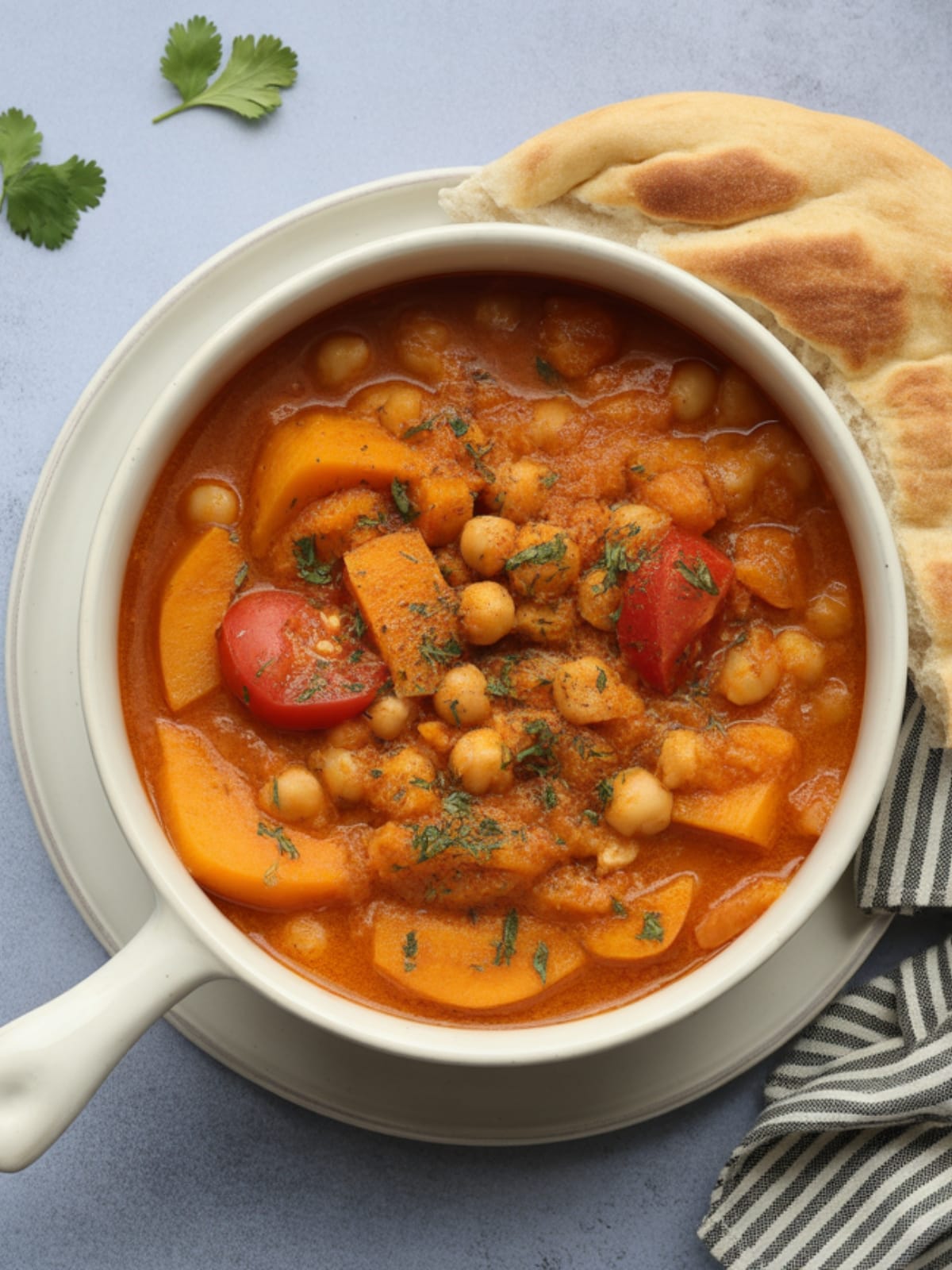
This Moroccan Pumpkin & Chickpea Stew is more than just a meal—it’s a celebration of how simple ingredients can transform into something extraordinary with the right combination of spices and techniques. Whether you’re exploring plant-based eating or simply looking to expand your culinary horizons, this stew delivers comfort, nutrition, and a touch of exotic flavor that might just transport you to the vibrant streets of Morocco. Happy cooking!
